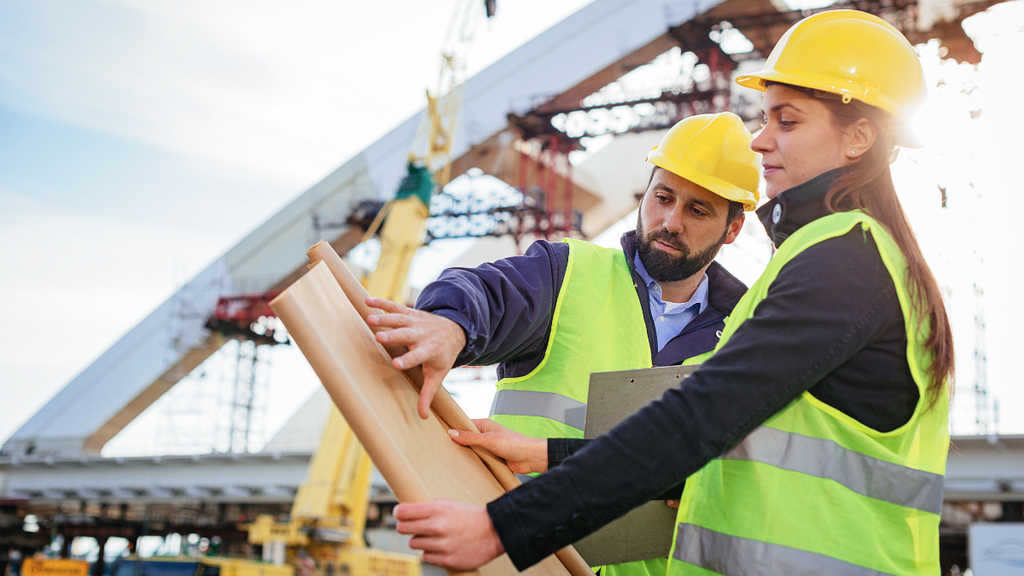The 30-Second Trick For Geotheta
The 30-Second Trick For Geotheta
Blog Article
The Facts About Geotheta Uncovered
Table of ContentsThe Best Guide To GeothetaSome Known Incorrect Statements About Geotheta 10 Simple Techniques For GeothetaThe Single Strategy To Use For GeothetaRumored Buzz on Geotheta

They conduct site investigations, gather examples, execute laboratory tests, and examine information to evaluate the viability of the ground for construction projects - Engineer of Record. Based on their findings, geotechnical engineers supply referrals for structure layout, slope security, retaining structures, and mitigation of geotechnical risks. They work together with other experts, such as engineers, architectural designers, and building teams, to make sure that geotechnical factors to consider are incorporated into the general job style and application
By examining the actions and properties of dirt and rock, they can recognize possible geotechnical dangers such as landslides, dirt settlement, or slope instability. Their knowledge helps stop failings or mishaps that might endanger lives and building. Below are some in-depth tasks and obligations of a geotechnical engineer: Site Examination: Geotechnical designers conduct site investigations to collect data on subsurface conditions.
They analyze the information to recognize the residential or commercial properties and habits of the soil and rock, including their stamina, permeability, compaction qualities, and groundwater conditions. Geotechnical Analysis and Design: Geotechnical engineers evaluate the data collected throughout website examinations to examine the security and viability of the site for building projects. They execute geotechnical calculations and modeling to assess aspects such as bearing ability, settlement, slope stability, side earth pressures, and groundwater flow.
A Biased View of Geotheta
Structure Layout: Geotechnical designers play a critical function in designing structures that can safely sustain the intended framework. They evaluate the dirt conditions and lots requirements to establish the proper foundation type, such as superficial foundations (e.g., grounds), deep foundations (e.g (https://www.openlearning.com/u/ianhammond-shld0k/)., piles), or specialized techniques like dirt enhancement. They think about elements such as negotiation limitations, bearing capacity, and soil-structure communication to establish ideal foundation layouts
They examine construction plans, display website tasks, and carry out field examinations to validate that the layout suggestions are followed. If unpredicted geotechnical concerns occur, they assess the scenario and supply recommendations for removal or modifications to the design. Threat Evaluation and Reduction: Geotechnical engineers assess geotechnical dangers and risks linked with the job website, such as landslides, liquefaction, or soil disintegration.

Cooperation and Interaction: Geotechnical designers function very closely with various other professionals entailed in a task, such as designers, architectural designers, and building teams. Effective communication and cooperation are necessary to integrate geotechnical considerations right into the general project design and construction process. Geotechnical designers give technological knowledge, response inquiries, and make certain that geotechnical needs are satisfied.
How Geotheta can Save You Time, Stress, and Money.
Here are some types of geotechnical designers: Structure Engineer: Foundation designers focus on developing and analyzing foundations for structures. They examine the soil problems, load demands, and website characteristics to figure out the most appropriate foundation kind and style, visit this website such as shallow structures, deep foundations, or specialized techniques like stack structures.
They review the aspects influencing incline security, such as soil homes, groundwater problems, and slope geometry, and establish strategies to stop incline failings and mitigate risks. Earthquake Designer: Earthquake engineers specialize in examining and developing frameworks to withstand seismic forces. They examine the seismic risk of a site, evaluate soil liquefaction possibility, and create seismic design criteria to make certain the security and strength of structures throughout quakes.
They execute field testing, gather examples, and assess the accumulated information to characterize the soil properties, geologic developments, and groundwater problems at a website. Geotechnical Instrumentation Engineer: Geotechnical instrumentation engineers concentrate on surveillance and determining the behavior of dirt, rock, and structures. They install and preserve instrumentation systems that monitor elements such as dirt negotiation, groundwater degrees, incline motions, and structural displacements to evaluate efficiency and supply very early warnings of potential concerns.
Not known Factual Statements About Geotheta
They perform tests such as triaxial examinations, combination examinations, direct shear tests, and leaks in the structure tests to gather information for geotechnical evaluation and design. Geosynthetics Designer: Geosynthetics designers specialize in the style and application of geosynthetic products, such as geotextiles, geogrids, and geomembranes. They utilize these materials to boost soil stability, enhance inclines, provide water drainage services, and control disintegration.
They tend to be investigatory people, which means they're intellectual, introspective, and analytical. They wonder, systematic, rational, analytical, and rational. A few of them are additionally social, suggesting they're kind, charitable, participating, patient, caring, practical, understanding, sensible, and pleasant. Does this audio like you? Take our free profession test to discover if geotechnical designer is among your top occupation suits.
In the workplace environment, geotechnical designers make use of specialized software program tools to carry out calculations, create layouts, and examine data. They prepare reports, testimonial task specs, interact with clients and employee, and coordinate job activities. The workplace setup offers a conducive setting for research study, analysis, and cooperation with other professionals associated with the task.
Some Ideas on Geotheta You Should Know
They regularly visit task sites to carry out website investigations, analyze geotechnical conditions, and collect information for analysis. These visits include taking a trip to different places, occasionally in remote or challenging surfaces. Geotechnical designers may do dirt tasting, conduct examinations, and monitor construction activities to make certain that the geotechnical aspects of the job are being implemented properly.
Geotechnical engineers also function in specialized geotechnical research laboratories. Geotechnical lab designers function extensively in these atmospheres, taking care of testing devices, operating instruments, and tape-recording data.
Report this page